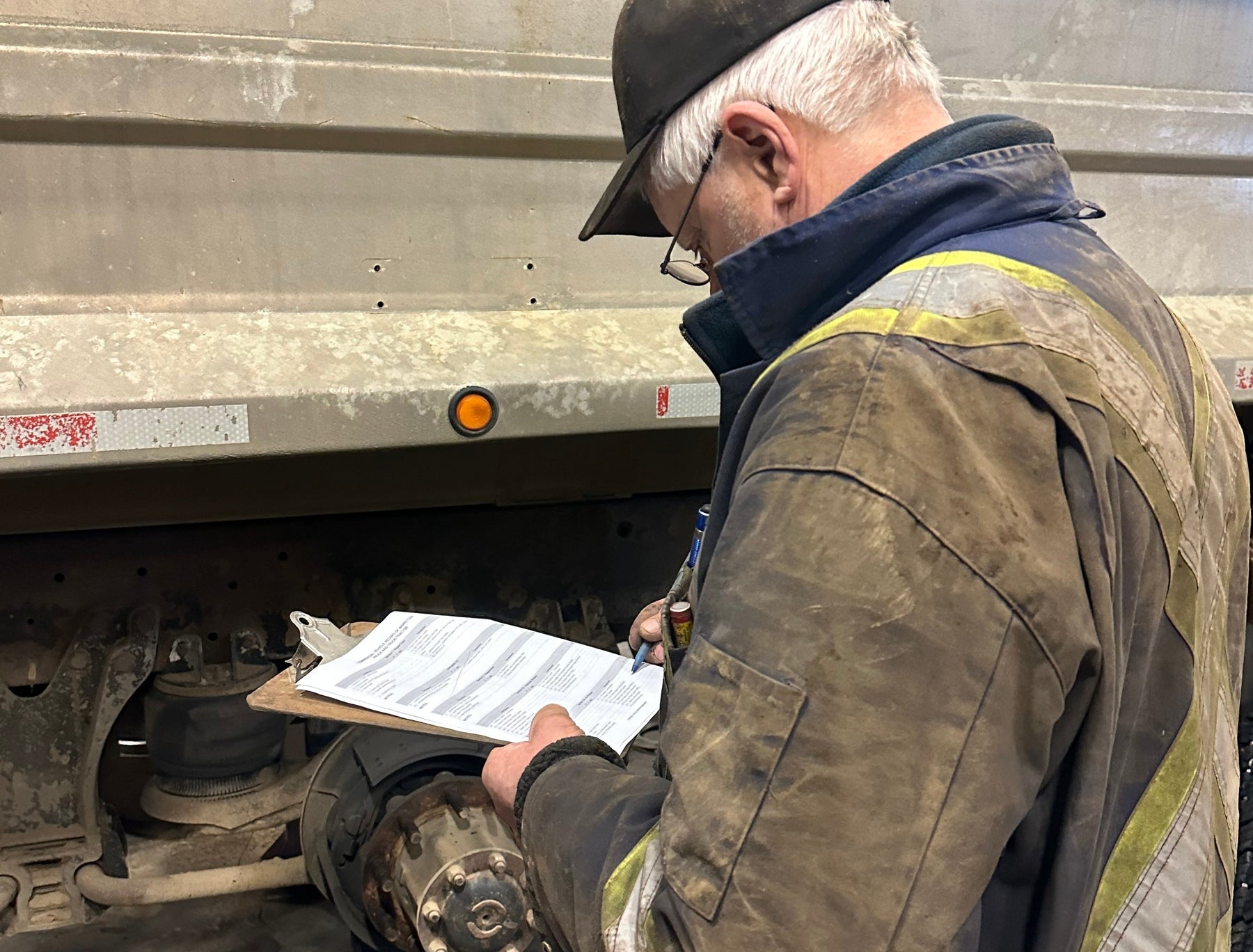
Everything You Need to Know about CVIP Inspections
If you own or operate commercial vehicles in Canada, you’ve likely heard of CVIP inspections. But what exactly are they, why are they important, and what do you need to know to stay compliant? Whether you’re a fleet manager, a truck driver, or a business owner, this blog post will guide you through everything you need to know about CVIP inspections.
What is a CVIP Inspection?
CVIP stands for Commercial Vehicle Inspection Program. It’s a mandatory safety inspection program to ensure that commercial vehicles operating on Canadian roads meet strict safety standards. These inspections are required by law in most provinces and territories to reduce the risk of accidents caused by faulty equipment or poorly maintained vehicles.
Certified inspectors at licensed facilities conduct CVIP inspections. They cover various vehicle components, from brakes and tires to lights and suspension systems. The goal is to identify and address any issues that could compromise the safety of the vehicle, its driver, and other road users.
Which Vehicles Require a CVIP Inspection?

Not all vehicles are subject to CVIP inspections. Generally, the program applies to commercial vehicles, which are defined as vehicles used for transporting goods or passengers for hire or in the course of business. Examples include:
-
Trucks and tractor-trailers
-
Buses and school buses
-
Delivery vans
-
Taxis and ride-sharing vehicles
-
Tow trucks
-
Utility vehicles (e.g., bucket trucks, cement mixers)
The specific requirements vary by province, but most jurisdictions require CVIP inspections for vehicles that exceed a certain weight (e.g., 4,500 kg or 11,000 lbs) or are used for specific purposes, such as transporting hazardous materials.
How Often Are CVIP Inspections Required?
The frequency of CVIP inspections depends on the type of vehicle and its usage. Inspections are usually required annually, but some vehicles may need to be inspected more frequently. For example:
-
New vehicles: May require an initial inspection before being put into service.
-
Older vehicles: May need more frequent inspections due to wear and tear.
-
After major repairs: Vehicles that have undergone significant repairs or modifications may need to be reinspected.
It’s essential to check the regulations in your province or territory to determine the specific inspection schedule for your vehicle.
What Does a CVIP Inspection Cover?

A CVIP inspection is thorough and covers all major systems and components of the vehicle. Here’s a breakdown of what inspectors typically check:
-
Brakes:
-
Brake pads, rotors, and drums
-
Brake lines and hoses
-
Parking brake functionality
-
-
Tires and Wheels:
-
Tread depth and condition
-
Tire pressure
-
Wheel alignment and fasteners
-
-
Lighting and Electrical Systems:
-
Headlights, taillights, and brake lights
-
Turn signals and hazard lights
-
Wiring and battery condition
-
-
Suspension and Steering:
-
Shock absorbers and springs
-
Steering linkage and alignment
-
Ball joints and bushings
-
-
Frame and Body:
-
Structural integrity
-
Corrosion and damage
-
Doors, mirrors, and windshield wipers
-
-
Exhaust and Emissions:
-
Exhaust system leaks
-
Emissions compliance
-
-
Safety Equipment:
-
Seat belts
-
Fire extinguishers
-
Warning devices (e.g., triangles, flares)
-
-
Other Components:
-
Fuel system
-
Horn
-
Mirrors and glass
-
If any component fails the inspection, the vehicle owner must repair or replace it before it can pass and receive a CVIP certificate.
How to Prepare for a CVIP Inspection
To increase your chances of passing a CVIP inspection on the first try, follow these tips:
-
Perform Regular Maintenance:
Regularly inspect and maintain your vehicle to address minor issues before they become major problems. -
Check the Basics:
Ensure that all lights, brakes, tires, and safety equipment are in good working condition. -
Review Past Inspection Reports:
Review the report to identify recurring issues if your vehicle has been inspected before. -
Clean Your Vehicle:
A clean vehicle makes it easier for the inspector to access and examine all components. -
Gather Required Documentation:
Bring your vehicle registration, insurance, and any previous inspection reports to the inspection facility.
What Happens if Your Vehicle Fails the Inspection?
If your vehicle fails the CVIP inspection, the inspector will provide a detailed report outlining the issues that must be addressed. You’ll have a specified period (usually 30 days) to complete the necessary repairs and have the vehicle reinspected. In some cases, a partial reinspection may be required to verify that the repairs were completed correctly.
It’s important to note that driving a vehicle with a failed CVIP inspection can result in fines, penalties, or even suspending your commercial vehicle operating authority.
How Much Does a CVIP Inspection Cost?
The cost of a CVIP inspection varies depending on the province, the type of vehicle, and the inspection facility. On average, you can expect to pay between 300 for a standard inspection. Additional costs may apply if repairs or reinspections are needed.
Why Are CVIP Inspections Important?
CVIP inspections play a critical role in ensuring road safety. Identifying and addressing potential issues helps prevent accidents caused by mechanical failures. They also protect your investment by extending the lifespan of your vehicle and reducing the likelihood of costly breakdowns.
For businesses, staying compliant with CVIP requirements is essential to avoid fines, legal liabilities, and damage to your reputation. A well-maintained fleet also improves efficiency and reduces downtime, saving you money in the long run.
Ready to Book a CVIP inspection?
CVIP inspections are a vital part of operating commercial vehicles in Canada. If you’re due for a CVIP inspection, don’t wait until the last minute. Schedule an appointment with Evolution Mechanical today and keep your vehicles in top shape.
Safe driving starts with a well-maintained vehicle!